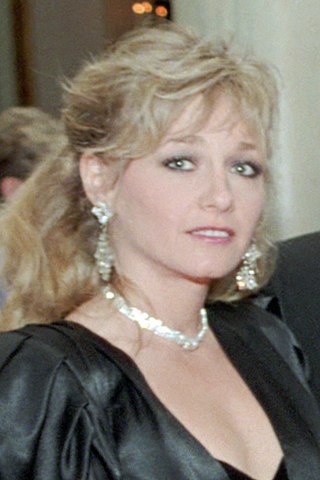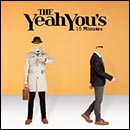
Andy Warhol was an American visual artist, film director and producer. A leading figure in the pop art movement, Warhol is considered one of the most important American artists of the second half of the 20th century. His works explore the relationship between artistic expression, advertising, and celebrity culture that flourished by the 1960s, and span a variety of media, including painting, silkscreening, photography, film, and sculpture. Some of his best-known works include the silkscreen paintings Campbell's Soup Cans (1962) and Marilyn Diptych (1962), the experimental films Empire (1964) and Chelsea Girls (1966), and the multimedia events known as the Exploding Plastic Inevitable (1966–67).

Emil Nolde was a German-Danish painter and printmaker. He was one of the first Expressionists, a member of Die Brücke, and was one of the first oil painting and watercolor painters of the early 20th century to explore color. He is known for his brushwork and expressive choice of colors. Golden yellows and deep reds appear frequently in his work, giving a luminous quality to otherwise somber tones. His watercolors include vivid, brooding storm-scapes and brilliant florals.
A Warhol worm is a computer worm that spreads as fast as physically possible, infecting all vulnerable machines on the entire Internet in 15 minutes or less. The term is based on the claim that "in the future, everyone will have 15 minutes of fame", which has been misattributed to Andy Warhol. A 2002 paper presented at the 11th USENIX Security Symposium proposed designs for better worms, such as a "flash worm" that identifies a hit-list of vulnerable targets before attacking.
Warhol superstars were a clique of New York City personalities promoted by the pop artist Andy Warhol during the 1960s and early 1970s. These personalities appeared in Warhol's artworks and accompanied him in his social life, epitomizing his dictum, "In the future everyone will be famous for fifteen minutes". Warhol would simply film them, and declare them "superstars".

The Factory was Andy Warhol's studio in New York City, which had four locations between 1963 and 1987. The Factory became famed for its parties in the 1960s. It was the hip hangout spot for artists, musicians, celebrities and Warhol's superstars. The original Factory was often referred to as the Silver Factory. In the studio, Warhol's workers would make silkscreens and lithographs under his direction.

Joseph Angelo D'Allesandro III is an American actor and Warhol superstar. He was a sex symbol of gay subculture in the 1960s and 1970s, and of several American underground films before going mainstream.

Moderna Museet, Stockholm, Sweden, is a state museum for modern and contemporary art located on the island of Skeppsholmen in central Stockholm, opened in 1958. In 2009 the museum opened the Moderna Museet Malmö in Malmö.

Patricia D'Arbanville is an American actress known for her appearance in Andy Warhol projects.

Benjamin Heinz-Dieter Buchloh is a German art historian. Between 2005 and 2021 he was the Andrew W. Mellon Professor of Modern Art in the History of Art and Architecture department at Harvard University.

Isabelle Collin Dufresne, known professionally as Ultra Violet, was a French-American artist, author, and both a colleague of Andy Warhol and one of his so-called Superstars. Earlier in her career, she worked for and studied with surrealist artist Salvador Dalí. Dufresne lived and worked in New York City, and also had a studio in Nice, France.
"Turn! Turn! Turn!", also known as or subtitled "To Everything There Is a Season", is a song written by Pete Seeger in 1959. The lyrics – except for the title, which is repeated throughout the song, and the final two lines – consist of the first eight verses of the third chapter of the biblical Book of Ecclesiastes. The song was originally released in 1962 as "To Everything There Is a Season" on the folk group the Limeliters' album Folk Matinee, and then some months later on Seeger's own The Bitter and the Sweet.

Karl Gunnar Vougt Pontus Hultén was a Swedish art collector and museum director. Pontus Hultén is regarded as one of the most distinguished museum professionals of the twentieth century. He was the pioneering former head of the Museum of Modern Art in Stockholm and in the 1970s he was invited to participate in the creation of the Centre Georges Pompidou in Paris, where he was the first director of the Musée National d'Art Moderne (MNAM) in 1974–1981.

Beauty No. 2 is a 1965 American avant-garde film by directed by Andy Warhol and starring Edie Sedgwick and Gino Piserchio. Chuck Wein also has a role in the film but never appears onscreen. Wein wrote the scenario and is also credited as assistant director.
Famous for being famous is a term, usually used pejoratively, for someone who attains celebrity status for no clearly identifiable reason and appears to generate their own fame, or someone who achieves fame through a family or relationship association with an existing celebrity.

"15 Minutes of Shame" is the debut single by American country music artist Kristy Lee Cook, written by Kelly Archer, Casey Kessel and Justin Weaver. It was released in August 2008 from the album Why Wait. The single is also her first entry on the Billboard country charts, reaching a peak of number 28 in November 2008.

"15 Minutes" is a pop song performed and written by British group The Yeah You's. It was penned by the band for their debut studio album Looking Through You (2009), and released as the debut single in June 2009.
Alfred Leslie was an American painter and filmmaker. He first achieved success as an Abstract Expressionist painter, but changed course in the early 1960s and became a painter of realistic figurative paintings.

Brian Balfour-Oatts is a British art dealer, collector and writer. He published William Scott: A Survey of His Original Prints, a catalogue of William Scott's graphic work.

The Daros Collection is a Swiss private collection of modern art owned by the Stephan Schmidheiny family. At its core are comprehensive groups of work by Andy Warhol, Brice Marden, Cy Twombly, Willem de Kooning and Gerhard Richter.
Princess is an American high-concept art-pop band and performance duo formed in 2004 and reinitiated in 2017 by Alexis Gideon and Michael O’Neill. Their performances and music challenge traditional understandings of art classifications and explore queerness through futuristic video, gender-bending costumes, and vocals and instrumentals drawing inspiration from a variety of musical genres.














